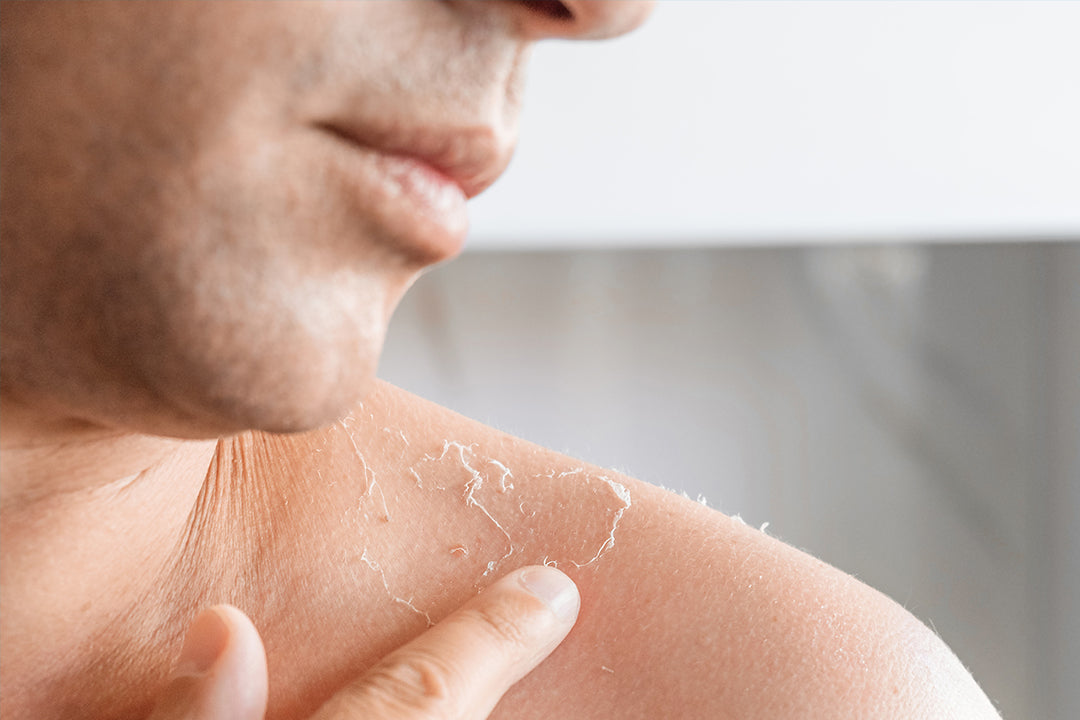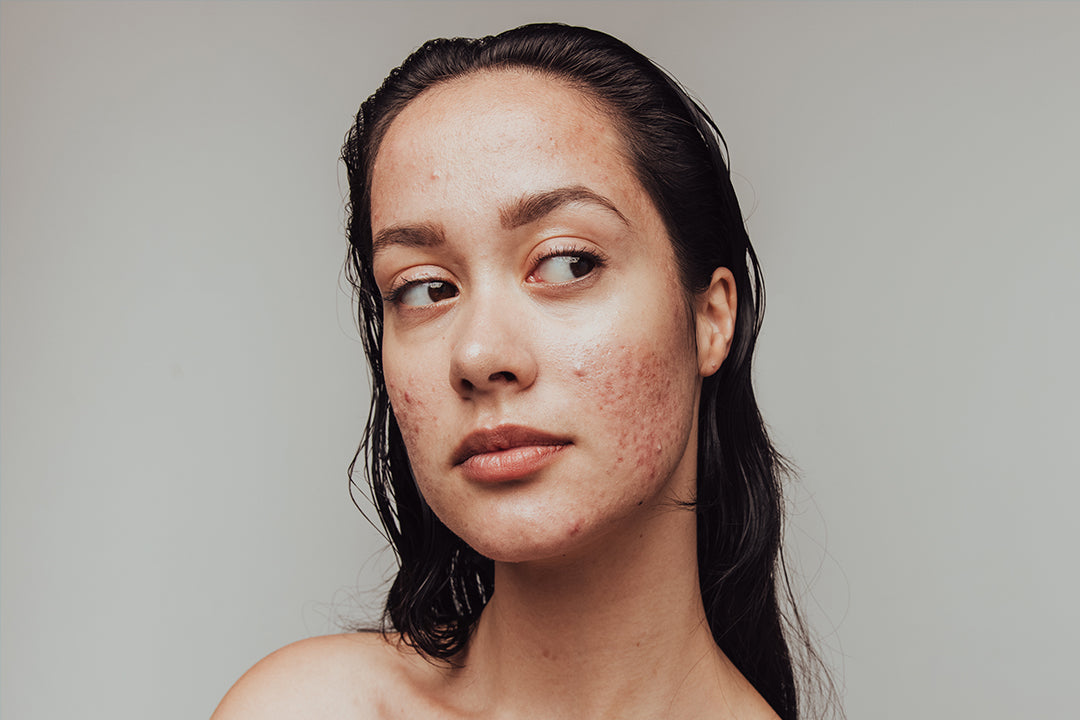Navigating the world of chemical exfoliants can feel overwhelming, but understanding the key players—Glycolic Acid, Lactic Acid, and Salicylic Acid—is the first step toward unlocking your best skin. As an ingredient-focused expert, I'm here to demystify these powerful actives. While all three exfoliate, they belong to different chemical families and are engineered to address distinct skin concerns.
These acids fall into two main categories: Alpha-Hydroxy Acids (AHAs) and Beta-Hydroxy Acids (BHAs). This guide will break down the science behind each one, helping you choose the perfect acid to achieve your skincare goals. Get ready for skincare that actually does what it says, backed by science, proven by results.
Understanding the Acid Families: AHAs vs. BHAs
Before diving into the specific acids, it's crucial to understand their families. Glycolic and Lactic acids are both AHAs, or Alpha-Hydroxy Acids. Think of AHAs as surface-level specialists. They are water-soluble molecules that work by dissolving the "glue" holding dead cells to the top layer of your skin, revealing a smoother, brighter complexion underneath [7].
Salicylic Acid, on the other hand, is a BHA, or Beta-Hydroxy Acid. What makes BHAs unique is that they are oil-soluble [8]. This allows them to penetrate deeper into your pores, cutting through oil and debris to exfoliate from within. To learn more about their functions, you can explore the differences between AHAs and BHAs in more detail.
A Deep Dive into Each Acid
Now, let's get into the specifics of what makes each of these acids a powerhouse in its own right.
Glycolic Acid: The Anti-Aging Powerhouse
Derived from sugar cane, Glycolic Acid is the most well-known AHA [5]. It boasts the smallest molecular size in the AHA family, which allows it to penetrate the skin's surface more effectively to deliver visible results [1].
Primary Benefits:
-
Visibly improves skin texture and smooths roughness.
-
Stimulates collagen production, helping to reduce the appearance of fine lines and wrinkles.
-
Helps fade hyperpigmentation, sun spots, and discoloration.
-
Reveals a more radiant, even-toned complexion.
Best For: Normal, combination, and sun-damaged skin types looking for powerful anti-aging benefits and overall rejuvenation.
Lactic Acid: The Gentle Hydrator
Lactic Acid is another popular AHA, often derived from milk. Its molecular structure is larger than Glycolic Acid's, which means it doesn't penetrate as deeply. This makes it a gentler, more forgiving option, perfect for those with more delicate skin.
Primary Benefits:
-
Provides gentle, surface-level exfoliation without significant irritation.
-
Improves the skin's natural moisture factor, actively hydrating as it exfoliates.
-
Brightens and evens out skin tone for a healthy glow.
Best For: Dry, sensitive, and mature skin types, as well as anyone new to chemical exfoliation. Many professional formulas, like those found in QRx Labs Chemical Peels, expertly blend different acids to maximize benefits while maintaining skin health.
Salicylic Acid: The Acne-Fighting Champion
As the most common BHA in skincare, Salicylic Acid is an undisputed champion for blemish-prone skin. Its oil-soluble nature is its superpower, allowing it to dive deep into pores and clear out the congestion that leads to breakouts [2]. This makes it one of the most beneficial skincare actives that help with acne.
Primary Benefits:
-
Penetrates deep into pores to dissolve excess oil, dead skin cells, and other debris.
-
Effectively treats existing acne, blackheads, and whiteheads while helping prevent new ones.
-
Possesses anti-inflammatory properties that calm the redness and swelling associated with breakouts.
Best For: Oily, combination, and acne-prone skin. If you're struggling with clogged pores and persistent blemishes, Salicylic Acid is your go-to active.
What’s the difference between glycolic acid, lactic acid, and salicylic acid?
To put it simply, your choice depends entirely on your skin's primary needs. Here is a direct comparison to help you find your perfect match.
| Feature | Glycolic Acid | Lactic Acid | Salicylic Acid |
|---|---|---|---|
| Acid Type | AHA (Alpha-Hydroxy Acid) | AHA (Alpha-Hydroxy Acid) | BHA (Beta-Hydroxy Acid) |
| Solubility | Water-soluble | Water-soluble | Oil-soluble [4] |
| Primary Function | Anti-aging, surface exfoliation | Gentle exfoliation, hydration | Deep pore cleansing, acne treatment |
| Best For Skin Types | Normal, sun-damaged | Sensitive, dry | Oily, acne-prone |
| Key Benefit | Improves texture & fine lines | Hydrates & brightens | Unclogs pores & calms inflammation |
Which Activities and Actives Pair Well with Exfoliating Acids?
Building a routine with exfoliating acids isn't just about the acid itself—it's also about the supporting players. Pairing acids correctly with other actives will amplify your results.
Pairing Acids with Niacinamide
If you're wondering which activities pair well with glycolic acid or other exfoliants, look no further than Niacinamide (Vitamin B3). This powerhouse ingredient is a perfect partner for AHAs and BHAs. While the acid works to exfoliate, Niacinamide steps in to strengthen the skin barrier, reduce redness, refine pores, and control oil. This synergistic pairing helps you get all the benefits of exfoliation with less potential for irritation.
For those with oily or blemish-prone skin, incorporating a targeted niacinamide serum is a game-changer. The QRxLabs ****NiacinaMax Serum features a potent 10% concentration of Niacinamide plus Tea Tree Oil, making it one of the best actives beneficial for acne-prone skin.
Combining Acids with Retinol
Combining acids and retinol requires a more strategic approach, as both are highly effective actives that can cause irritation if used improperly [3]. For pro-level results without the risk, follow these best practices:
-
Alternate Nights: Use your acid-based product one night and your retinol product the next. This gives your skin a break.
-
Separate Times of Day: Use your acid in the morning and retinol at night. If you do this, daily sunscreen is absolutely essential.
For a simplified, professionally formulated solution, the QRxLabs 5% Niacinamide + Retinol Serum combines these potent ingredients in one balanced formula. It’s designed to deliver visible anti-aging benefits safely, giving you pro-level results, straight from your bathroom, no needles required.
How to Safely Use Acids in Your Routine
To get the most out of your chemical exfoliants and maintain a healthy skin barrier, follow these essential rules.
-
Start Slow: Begin by using your acid product only 1-2 times per week. As your skin builds tolerance, you can gradually increase the frequency.
-
Patch Test: Before applying a new product to your entire face, always test it on a small, discreet area of skin (like behind your ear) to check for adverse reactions.
-
Follow with Hydration: After exfoliating, apply soothing and hydrating serums or moisturizers to replenish your skin and support its barrier function.
-
Wear Sunscreen: This is non-negotiable. AHAs and BHAs can increase your skin's sensitivity to the sun, making it more vulnerable to damage [6]. Apply a broad-spectrum SPF 30 or higher every single day.
For more tips on building an effective regimen, our guide to skincare routines can help you put all the pieces together.
Conclusion: The Best Acid is the One That’s Right for You
Ultimately, there is no single "best" acid. The right choice is entirely personal and depends on your unique skin. Let's recap:
-
Choose Glycolic Acid for signs of aging, sun damage, and uneven texture.
-
Choose Lactic Acid for a gentle introduction to exfoliation or if you have dry, sensitive skin.
-
Choose Salicylic Acid to fight acne, clear clogged pores, and control excess oil.
No matter your age, stage, or skin story, QRxLabs has your back. Our formulations are rooted in dermatologist-inspired science to deliver visible, tangible benefits at an accessible price. Explore the QRxLabs collection today and discover the perfect acid-based solution to transform your skin.
Citations
- https://netmeds.com/health-library/post/glycolic-acid-vs-salicylic-acid-key-differences-benefits-which-exfoliant-is-better-for-your-skin?srsltid=AfmBOoqjWs6evAzAwTUSOo7VT7V-kgbvvi6b_f8DMwu456VYEH4_ctmx
- https://dotandkey.com/blogs/skin-care/glycolic-acid-vs-salicylic-acid?srsltid=AfmBOooVgmCgPN9FNPyKFAnV6fEnebAz9Wl2t1PCts-axfWa-w0_YMl9
- https://miiskin.com/acne/medications/glycolic-vs-salicylic-acid
- https://chemistconfessions.com/blogs/salicylic-vs-glycolic-acid
- https://threeshipsbeauty.com/blogs/news/glycolic-acid-vs-salicylic-acid
- https://acne.org/alpha-hydroxy-acids-ahas-vs-beta-hydroxy-acids-bhas
- https://dotandkey.com/blogs/skin-care/aha-vs-bha?srsltid=AfmBOorXTZsrQC6zJsGbYW2gOEMipKLOUXFhMx0-8kb00jOTDcGqDxVh
- https://grove.co/blog/aha-vs-bha?srsltid=AfmBOooS4FjLh-mIWRc0UEoat3uCy-ZJv3zHBi9_jDp9OGnLW_C1NkRa




